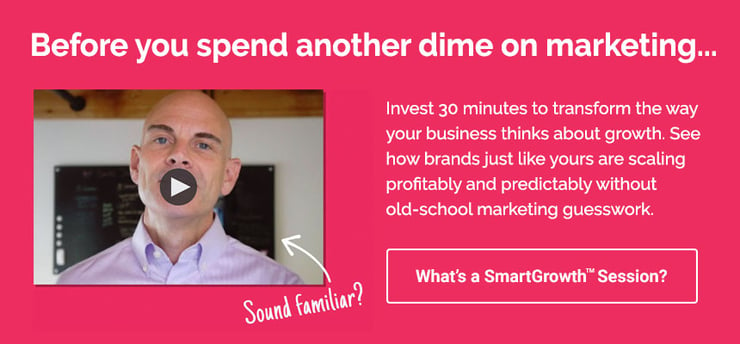For B2B founders who've built successful companies through word-of-mouth and referrals, content marketing often feels like shouting into the void. You invest time and resources creating blogs, social posts, and videos – but see little return. Your content sits unread, your insights unshared, your expertise hidden from the very buyers who need it most.
Here's the truth: brand content marketing isn't about cranking out more content. It's about strategically showcasing your unique expertise to build trust and authority with your target audience. In this guide, we'll reveal 7 proven ways successful brands turn their knowledge into a powerful engine for generating qualified leads and driving predictable revenue growth.
Brand Content Marketing: 7 Proven Ways to Drive Growth
1. Build Your Content Foundation First
Want to know why most brand content marketing fails? Because founders rush to create content without documenting what makes their solution unique. Start with your origin story – what market gap did you identify? What early attempts failed? What solution finally worked?
Document your methodology and frameworks. You solved a problem that others couldn't. Now break down exactly how you did it. What's your unique process? What frameworks guide your approach? These become the building blocks for truly differentiated content.
Define 3-4 content pillars based on your buyers' biggest pain points. Each pillar should represent a major challenge your solution addresses. For example, a B2B software company might focus on efficiency, scalability, and compliance – with every piece of content tying back to these core themes.
2. Create High-Impact Bottom-of-Funnel Content
Stop endlessly churning out top-of-funnel content. Instead, tailor your content strategy to every stage of the buyer’s journey. Your most valuable prospects want proof that you can deliver results. Develop detailed case studies that showcase concrete outcomes – with real numbers, specific challenges overcome, and clear implementation steps.
Build comparison pages that make the competition irrelevant. Don't just list features – highlight the meaningful differences in approach and methodology that set your solution apart. What risks do buyers face by choosing alternatives? What's at stake if they get it wrong?
Share specific pricing and ROI data. Yes, really. B2B buyers need to justify their purchase decisions. Give them the ammunition they need with concrete cost-benefit analysis, implementation timelines, and expected returns.
3. Transform Internal Expertise into Thought Leadership
You're already creating valuable content – you just don't realize it. Record internal team meetings and strategy sessions. Extract key insights and frameworks. Turn them into blog posts, social content, and lead magnets. This type of thought leadership content helps build trust and establish authority.
Mine your sales calls for content gold. What questions come up repeatedly? What objections do prospects raise? Create content that proactively addresses these concerns before buyers even raise them.
Document client success stories in real time. Don't wait until after the project ends. Capture key milestones, challenges overcome, and results achieved along the way. This becomes a rich source of case studies and testimonials.
4. Maximize Content ROI Through Strategic Distribution
One piece of content should spawn dozens of assets through the content waterfall method. Start with long-form content like blogs or webinars. Break them down into smaller pieces for social media. Extract key quotes and statistics. Create infographics and video clips.
Adapt your message for each platform. LinkedIn audiences want business insights. X rewards quick tips and statistics. Email subscribers expect in-depth analysis. Same core message, but different packaging.
Track engagement religiously. Which topics resonate most? Which formats drive action? Double down on what works. Cut what doesn't. Your data will tell you where to focus your brand content marketing efforts.
5. Align Content with the B2B Buyer Journey
Map every piece of content to a specific stage of awareness. Is your buyer just realizing they have a problem? Show them the costs of inaction. Evaluating solutions? Help them navigate their options. Ready to buy? Provide implementation guidance and ROI calculations.
Address objections before they arise. Fear of change. Implementation concerns. Budget constraints. Create content that systematically eliminates these barriers to purchase.
Always guide prospects toward the next logical step. Every piece of content should have a clear call-to-action that moves buyers forward in their journey – whether that's downloading a resource, booking a demo, or starting a trial.
6. Make Your Website a 24/7 Lead Generation Engine
Optimize key pages for search intent. Understand what information buyers seek at each stage. Create dedicated pages that directly answer their questions and guide them toward conversion.
Develop targeted lead magnets for each target audience. What specific challenges keep them up at night? Create valuable resources that help solve these problems while showcasing your expertise.
Build automated nurture sequences that continue the conversation. Use email automation to deliver the right content at the right time based on prospect behavior and engagement.
7. Measure What Matters
Focus on six key growth metrics: awareness, acquisition, activation, revenue, retention, and referral. These tell you if your brand content marketing actually drives business results.
Track content performance across all channels. Which pieces drive the most qualified leads? Which convert best? Use tools like Google Analytics and your CRM to connect content directly to revenue.
Let data guide your strategy. Monthly reporting helps spot trends. Quarterly planning sets priorities. Annual review ensures alignment with business goals. No more random acts of content – every piece serves a strategic purpose.
Ready to Scale Your Brand Content Marketing?
Brand content marketing isn't just another task on your to-do list – it's a systematic approach to scaling the trust and authority you've already built through word-of-mouth. By following these 7 strategies, you'll transform your content into a predictable source of qualified leads and revenue growth.
Ready to take your B2B content marketing to the next level? Download our free B2B Marketing Playbook to get our complete framework for turning content into customers. We'll show you exactly how to do the right things, in the right order, to achieve exponential growth without the guesswork.





.png)
.png)
.png)